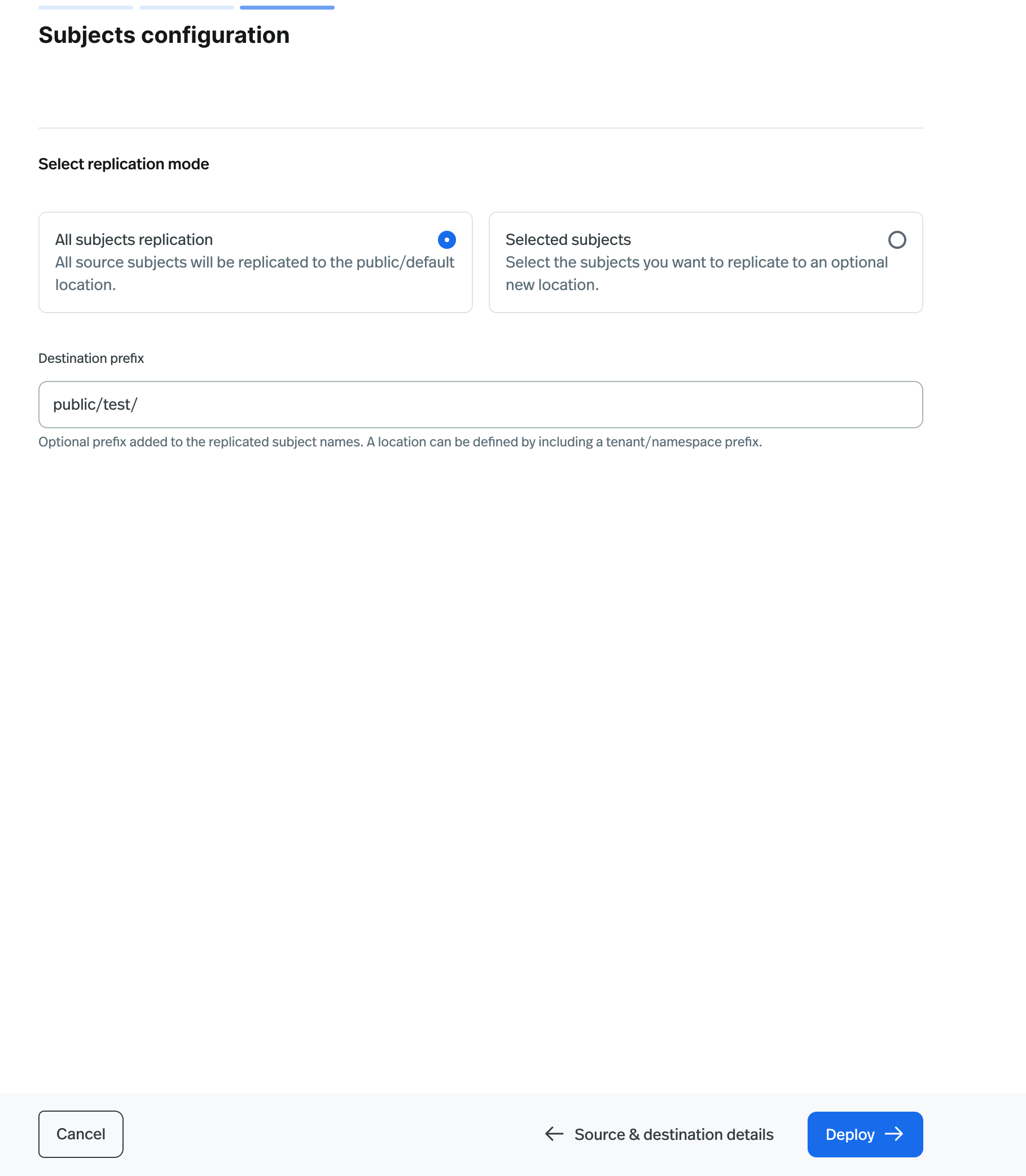Prerequisites
- You have created a Ursa cluster in your organization. Ensure no data or schema is produced in the Ursa cluster to avoid potential conflicts.
Create Data Migration
In the UI, you will create a UniLink Data migration job within your organization. Ensure no data is produced in replicated topics in the destination cluster during data migration to prevent conflicts.- Navigate to the Organization Dashboard.
- Click Unilink in the left navigation pane to access the UniLink page.
- Click the Create button at the top right corner and select Data Migration to initiate the job creation process.
- Enter the Job Name for this UniLink instance. Then click Source & Destination Details to proceed.
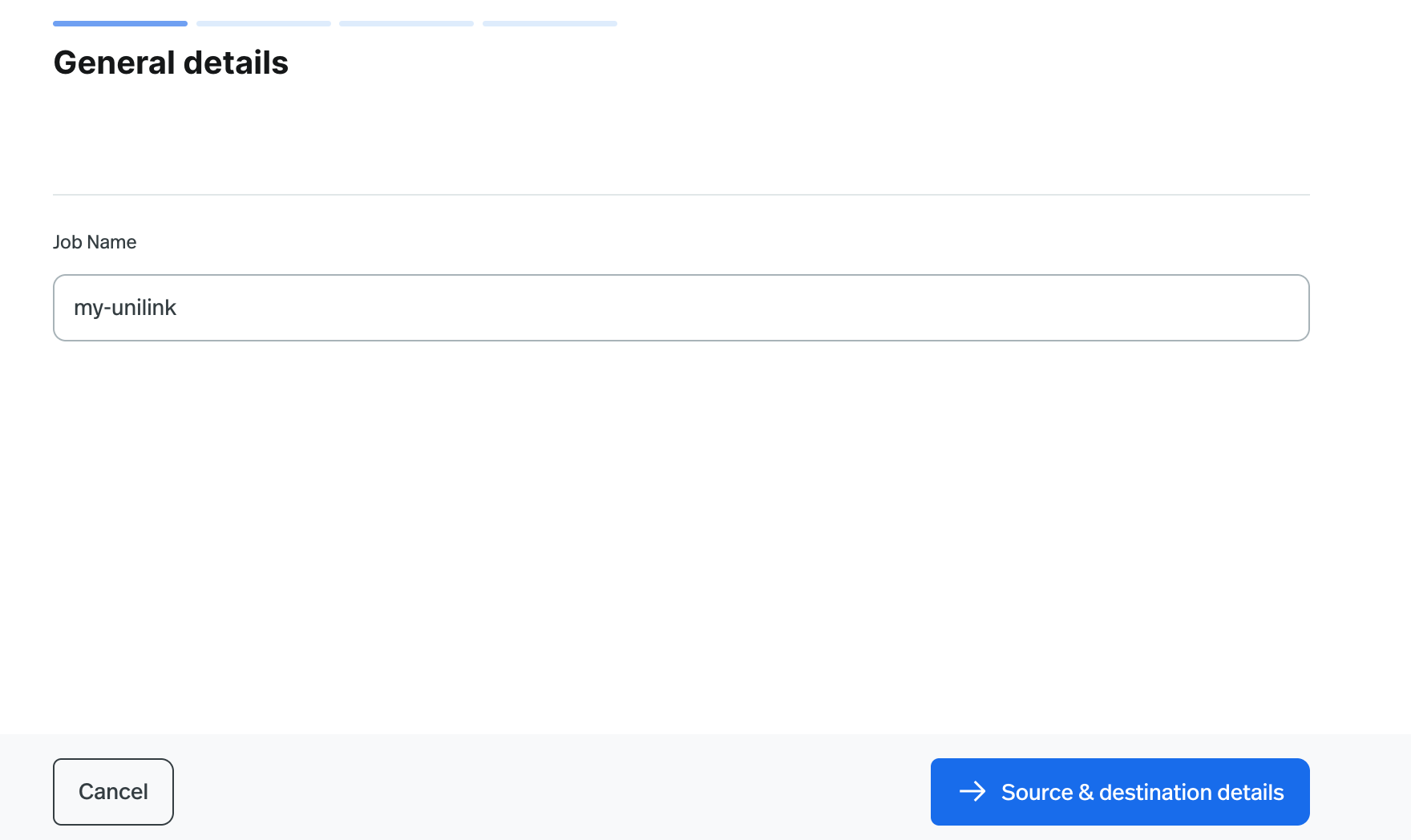
Source & Destination Cluster Configuration
- On the Source & Destination Details page, enter the Source Cluster and Destination Cluster information. Provide the URL for the source cluster and select the destination cluster from the dropdown list.
- If your source cluster has TLS enabled, toggle the Cluster with TLS enabled switch.
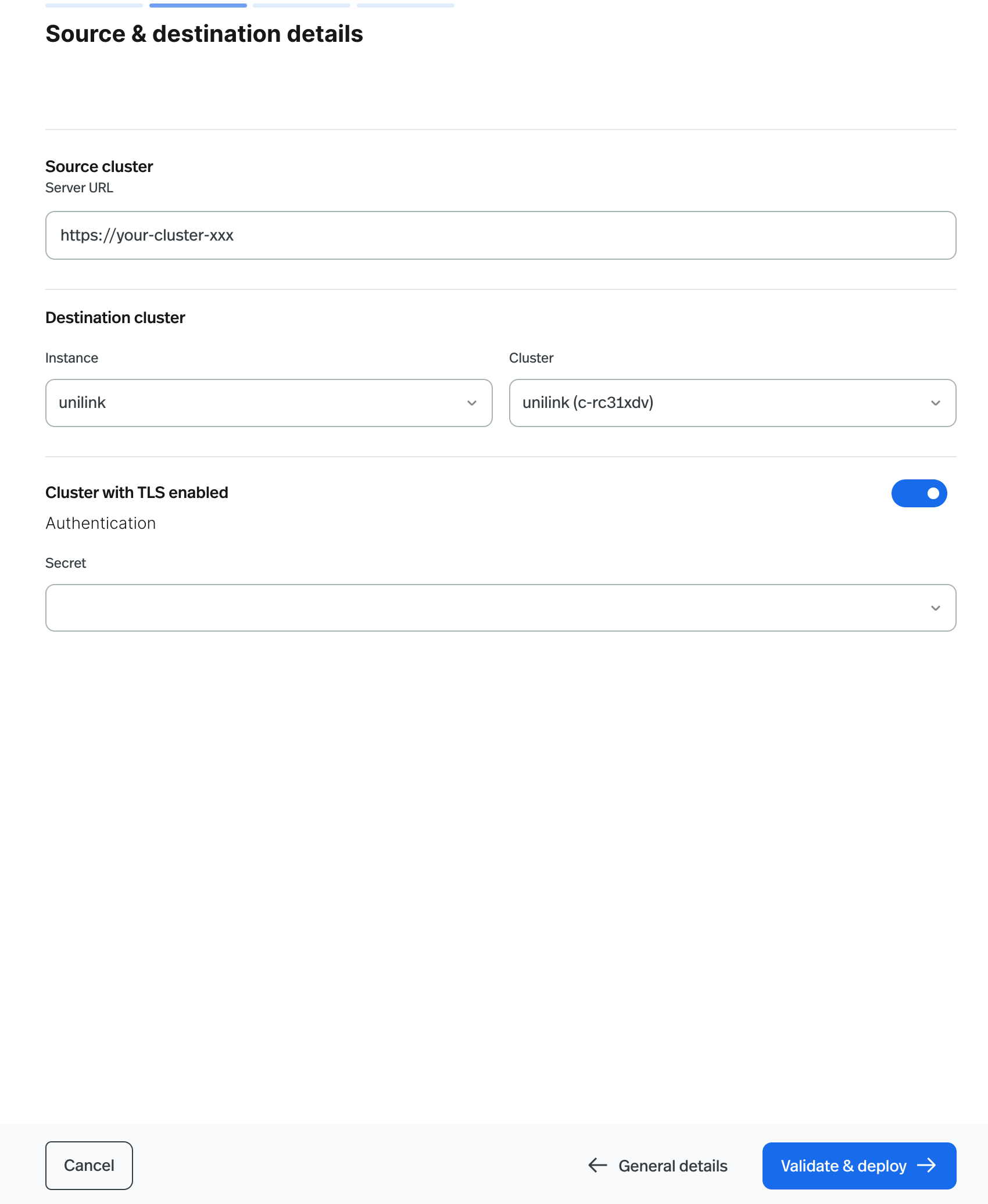
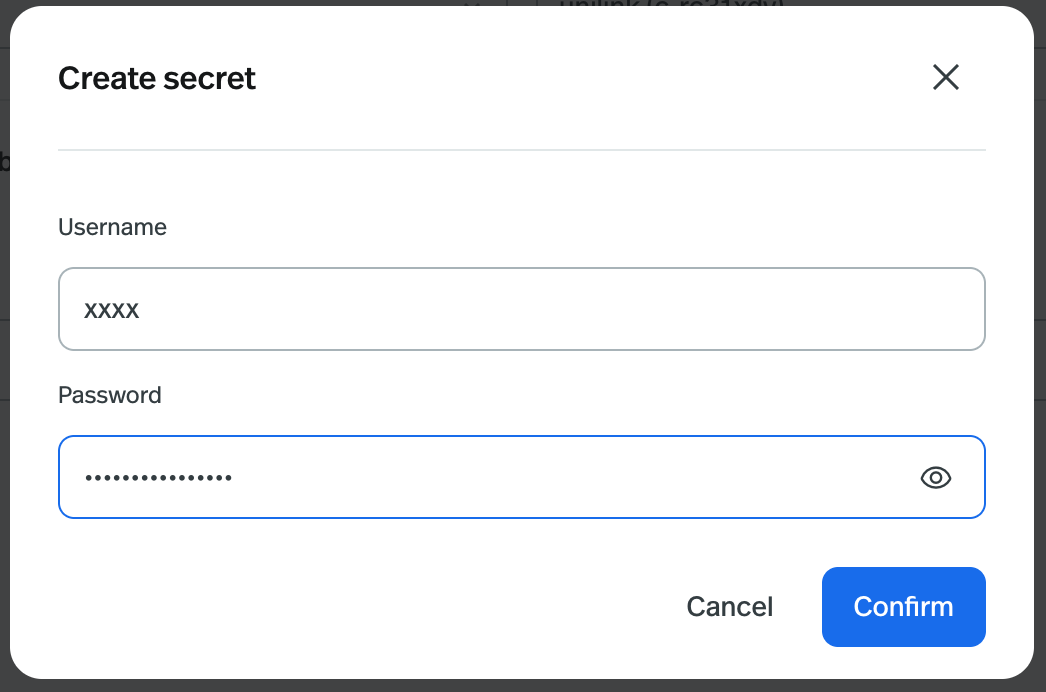
Topic Configuration
-
On the Topic Configuration page, select the topics you want to migrate from the source cluster to the destination
cluster. Choose All topics replications to replicate all topics or Selected topics to replicate specific
topics.
If you select Selected topics, enter the topic name in the Include topics input box. It supports multiple
regex patterns separated by commas, e.g.,
topic1,topic2,topic3-.*. -
Enter the Destination prefix for the topics in the destination cluster. The prefix will be added to the topic
name in the destination cluster. For example, if the prefix is
public/test/,topic1will be migrated topublic/test/topic1. This helps migrate topics to a specific namespace. The prefix must be in the format of tenant/namespace/ or any string ending with an underscore. - UniLink will periodically check the source cluster for new topics and automatically migrate them to the destination cluster. Set the Topic refresh interval to specify the interval in seconds for checking new topics.
-
Optionally, enter Excluded topics to exclude certain topics from migration. It supports multiple regex patterns
separated by commas, e.g.,
topic1,topic2,topic3-.*. - Click Connect & Deploy. This builds a topic mapping between the source and destination cluster for review. Click Continue to proceed to the next step.
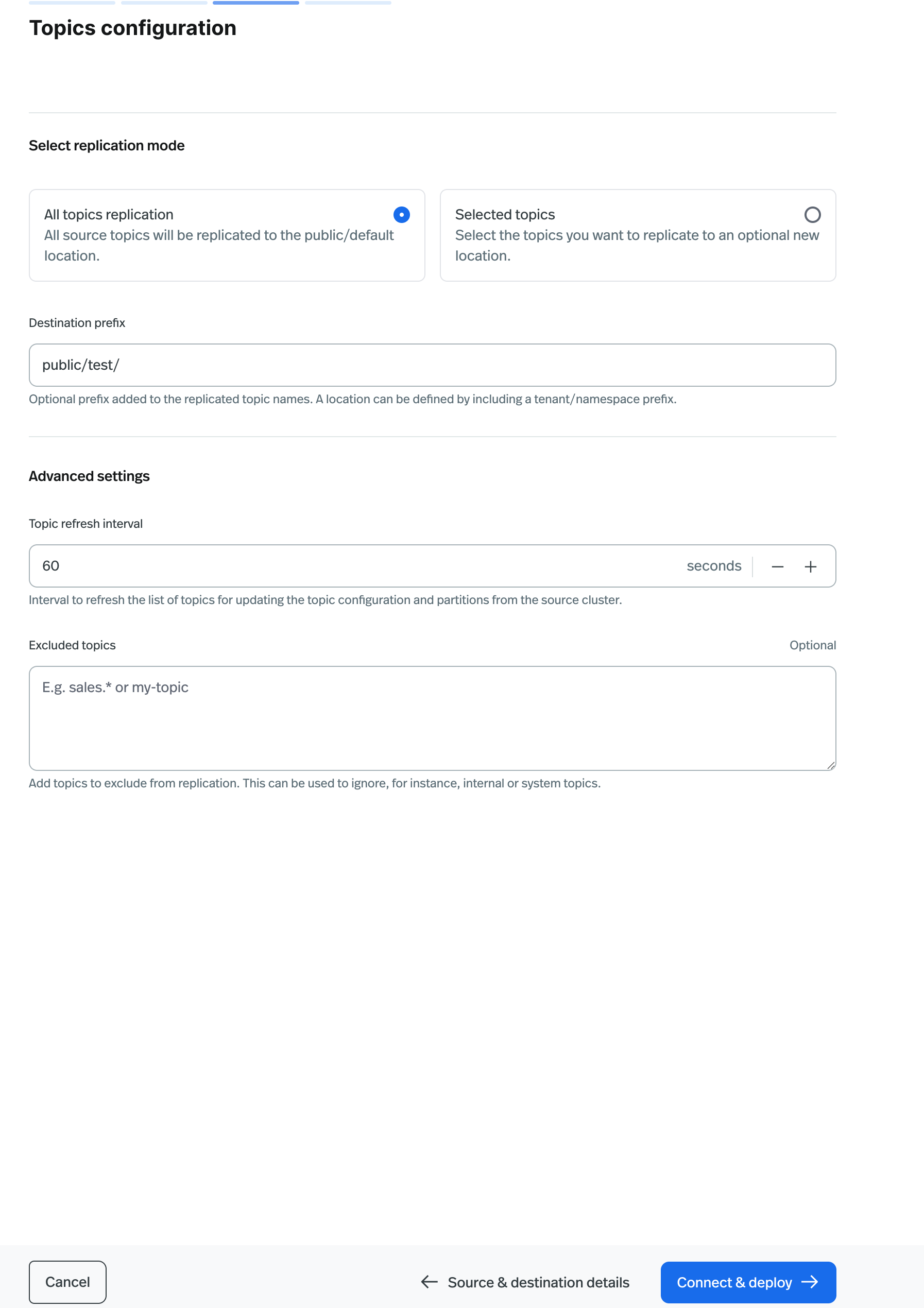
Consumer Groups Configuration
UniLink will periodically check the source cluster for new consumer groups and automatically migrate them to the destination cluster. Configure the consumer groups migration in this step.- Enable Enable consumer groups replication to migrate consumer groups.
-
Choose All consumer groups to migrate all consumer groups or Selected consumer groups to migrate specific
ones.
If you select Selected consumer groups, enter the consumer group name in the Include consumer groups input
box. It supports multiple regex patterns separated by commas, e.g.,
group1,group2,group3-.*. - Set the Consumer group refresh interval to specify the interval in seconds for checking new consumer groups.
-
Optionally, enter Excluded consumer groups to exclude certain groups from migration. It supports multiple regex
patterns separated by commas, e.g.,
group1,group2,group3-.*. - Click Deploy. This builds a consumer group mapping between the source and destination cluster for review. Click * *Continue** to deploy the UniLink job.
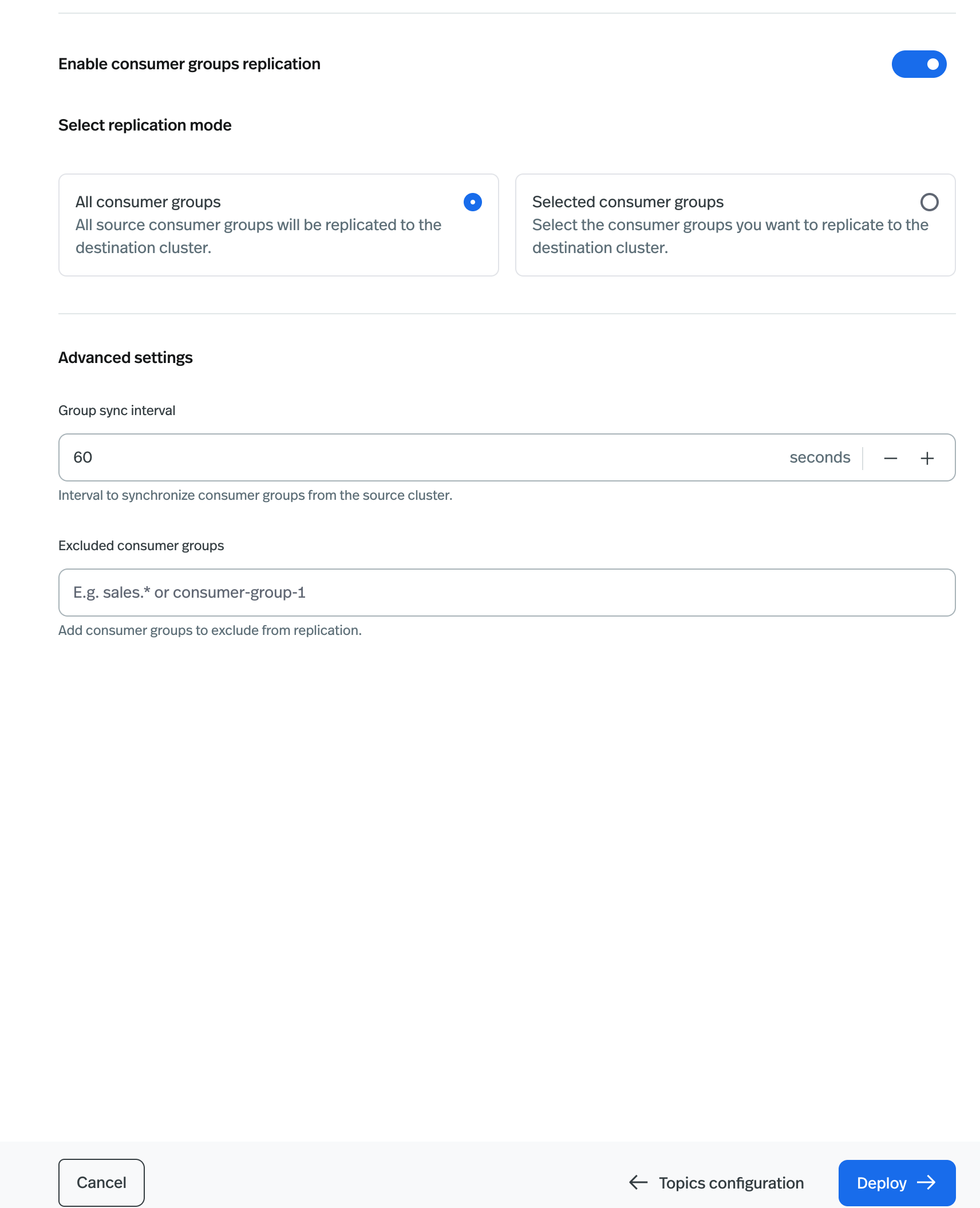
Create Schema Migration
Using UniLink Schema Migration, you can migrate schemas from the source cluster to the destination cluster. UniLink Schema Migration periodically checks the source cluster for new schemas and automatically migrates them to the destination cluster. During schema migration, UniLink will set the destination cluster schema registry to import mode, preventing it from accepting new schemas from your client. After deleting the UniLink Schema Migration job, the registry will revert to read-write mode to allow new schema submissions.- Navigate to the Organization Dashboard.
- Click Unilink in the left navigation pane to access the UniLink page.
- Click the Create button at the top right corner and select Schema Migration to start the job creation process.
- Enter the Job Name for this UniLink Schema instance. Then click Source & destination Details to proceed.
Source & Destination Cluster Configuration
- On the Source & Destination Details page, enter the Source Cluster and Destination Cluster information. Provide the URL for the source cluster schema registry and select the destination cluster from the dropdown list.
- Create a secret for the source cluster. Click Create Secret to generate a secret for the source cluster. Enter the API Key and API Secret for the source cluster, then click Create. You can also select an existing secret from the dropdown list.
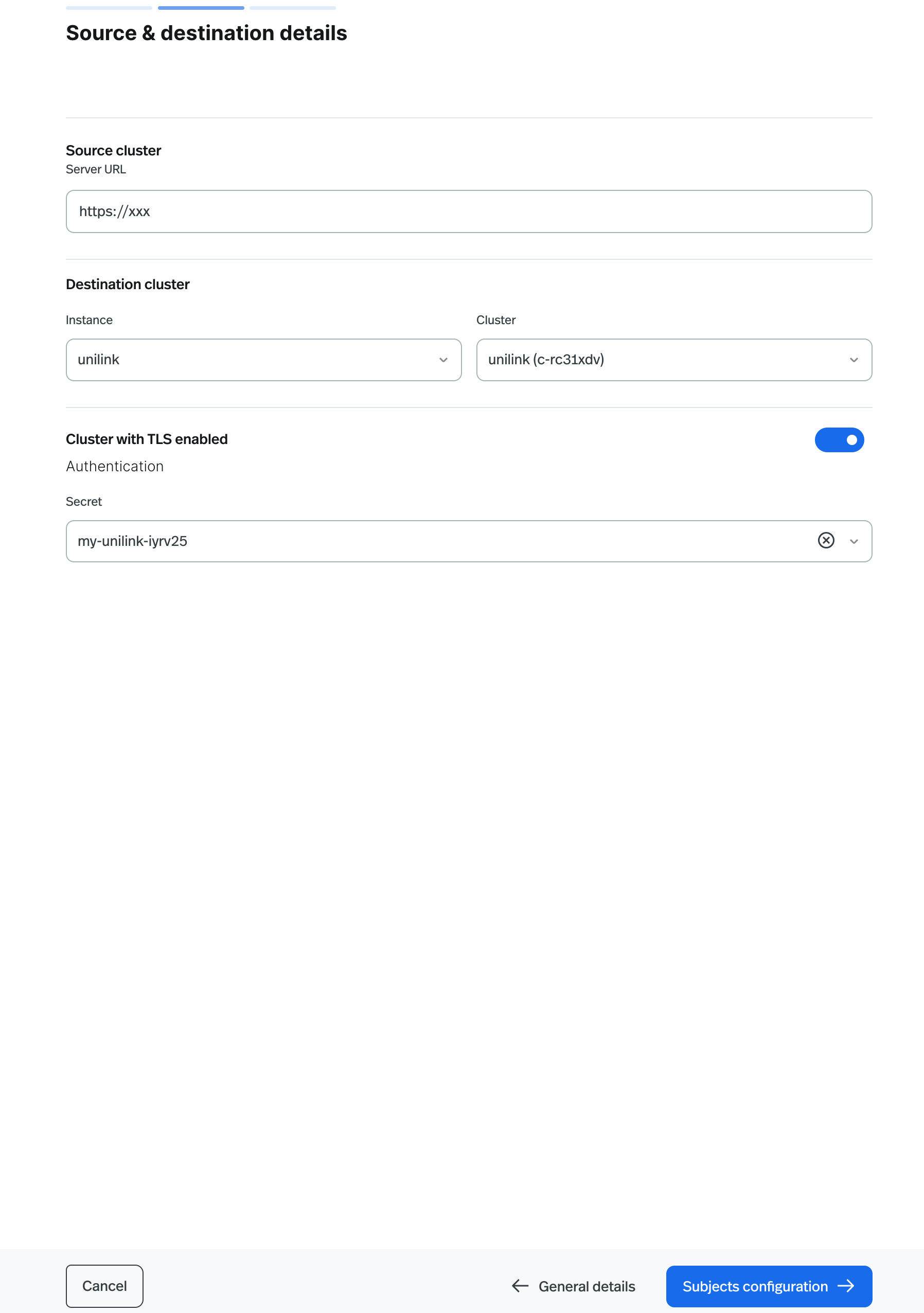
Subjects Configuration
-
On the Subjects Configuration page, select the subjects you want to migrate from the source cluster to the
destination cluster. Choose All subjects replication to migrate all subjects or Selected subjects to migrate
specific ones.
If you select Selected subjects, enter the subject name in the Include subjects input box. It supports
multiple regex patterns separated by commas, e.g.,
subject1,subject2,subject3-.*. -
Enter the Destination prefix for the subjects in the destination cluster. The prefix will be added to the subject
name in the destination cluster. For example, if the prefix is
public/test/,subject1will be migrated topublic/test/subject1. This helps migrate subjects to a specific namespace. The prefix must be in the format of tenant/namespace/ or any string ending with an underscore. Ensure this subject mapping configuration is consistent with the topic mapping configuration in the Data Migration job.
